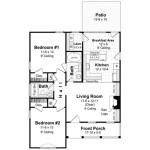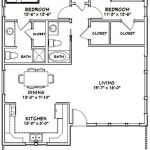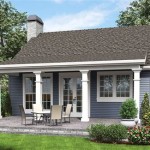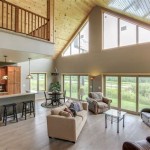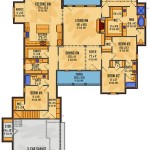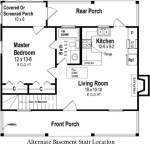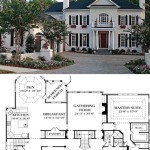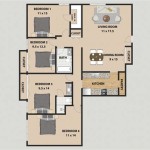Exploring the Versatility of 1-Story 3-Bedroom Floor Plans
Single-story homes, particularly those featuring three bedrooms, represent a popular choice for a wide range of homeowners. Their accessibility, efficient layout, and potential for aging in place contribute to their enduring appeal. This article will delve into the various aspects of 1-story 3-bedroom floor plans, examining their advantages, design considerations, common layouts, and suitability for different lifestyles.
A 1-story 3-bedroom floor plan offers several inherent benefits. The absence of stairs eliminates the challenges associated with multi-level living, making it ideal for individuals with mobility limitations, young families with small children, and those seeking to simplify their daily routines. The ease of cleaning and maintenance is another significant advantage, as all areas are readily accessible without the need for climbing stairs. Furthermore, single-story homes often promote a sense of connection and flow between living spaces, facilitating interaction and creating a more cohesive living environment.
Accessibility and Aging in Place
One of the most compelling reasons to consider a 1-story 3-bedroom floor plan is its inherent accessibility. The lack of stairs makes it significantly easier for individuals with mobility issues, such as those using wheelchairs or walkers, to navigate the home independently. This factor is particularly important for homeowners planning to age in place, allowing them to remain in their homes comfortably and safely for extended periods. Incorporating universal design principles, such as wider doorways, roll-in showers, and lever-handled door hardware, can further enhance the accessibility of the home.
Beyond physical accessibility, 1-story homes can also offer a greater sense of security and independence for older adults. The absence of stairs reduces the risk of falls, a common concern for seniors. The simplified layout allows for easier monitoring and supervision, particularly helpful for individuals with cognitive impairments. The ability to access all areas of the home without assistance promotes a sense of control and autonomy, contributing to overall well-being.
When designing a 1-story 3-bedroom floor plan with aging in place in mind, consider features that will enhance comfort and convenience. These may include adjustable-height countertops in the kitchen and bathrooms, grab bars in the bathrooms, and adequate lighting throughout the home. A well-designed floor plan can also incorporate designated spaces for medical equipment or in-home care, if needed. By proactively addressing the needs of older adults, a 1-story home can provide a safe, comfortable, and supportive environment for many years to come.
Common Layouts and Design Considerations
1-story 3-bedroom floor plans exhibit significant variation in layout and design, offering homeowners a range of options to suit their individual needs and preferences. Common layouts include the ranch-style home, which typically features a long, low profile with a focus on horizontal space; the open-concept design, which emphasizes shared living areas such as the kitchen, dining room, and living room; and the split-bedroom plan, which separates the master suite from the secondary bedrooms for enhanced privacy.
Within these broad categories, numerous variations exist. For example, a ranch-style home may incorporate a formal living room and dining room, while an open-concept design might prioritize a large, informal gathering space. A split-bedroom plan could feature a central living area that separates the master suite from the remaining bedrooms, or it could position the bedrooms on opposite ends of the house. The choice of layout will depend on factors such as lifestyle, family size, and personal preferences.
Several design considerations are crucial when planning a 1-story 3-bedroom floor plan. Efficient use of space is paramount, as the single-story design necessitates careful planning to maximize square footage. Consider the flow of traffic between rooms, ensuring that pathways are clear and unobstructed. Pay attention to natural light, incorporating large windows and skylights to brighten interior spaces. Adequate storage is also essential, as single-story homes may lack attic or basement space for storage. Built-in shelving, closets, and storage sheds can help to address this need.
The orientation of the home on the building site can also significantly impact its comfort and energy efficiency. Consider the direction of sunlight and prevailing winds when positioning the home. South-facing windows can maximize solar gain in colder climates, while strategically placed trees can provide shade in warmer climates. Proper insulation and ventilation are also crucial for maintaining a comfortable indoor environment and reducing energy consumption.
Suitability for Different Lifestyles
The versatility of 1-story 3-bedroom floor plans makes them suitable for a wide range of lifestyles. They are particularly well-suited for families with young children, as the single-story design eliminates the risk of falls and allows parents to easily supervise their children. The open-concept layout often found in these homes promotes interaction and creates a sense of togetherness. The proximity of bedrooms can also be advantageous for parents with young children who require frequent attention.
Empty nesters and retirees also find 1-story 3-bedroom floor plans appealing. The accessibility of the single-story design allows them to age in place comfortably and safely. The reduced maintenance requirements compared to multi-level homes can also be a significant benefit. The extra bedrooms can be used for guest rooms, home offices, or hobbies. The smaller footprint of a 1-story home can also translate into lower utility bills and property taxes.
Individuals and couples who work from home may also appreciate the practicality of a 1-story 3-bedroom floor plan. One of the bedrooms can be easily converted into a dedicated home office, providing a quiet and productive workspace. The remaining bedrooms can be used for guests or hobbies. The single-story design can also create a clear separation between work and living spaces, helping to maintain a healthy work-life balance.
Beyond these specific demographics, 1-story 3-bedroom floor plans can also appeal to anyone seeking a simple, efficient, and accessible living space. The ease of maintenance, the flow of living spaces, and the potential for customization make them a versatile option for a wide range of homeowners. The relatively smaller size compared to larger multi-story homes can also make them a more affordable and environmentally friendly choice.
In conclusion, the 1-story 3-bedroom floor plan presents a practical and adaptable housing option that caters to diverse needs. Its accessibility, coupled with thoughtful design considerations, makes it a compelling choice for those seeking comfort, convenience, and a lasting home.

Simple One Story 3 Bedroom House Plans Modular Home Floor 1200 Sq Ft

3 Bedroom House Plans With Open Floor Plan Remarkable One Story Design Basi Planos De Casas Diseño Modernas Disenos Unas

Single Y 3 Bedroom House Plan Pinoy Eplans Bungalow Floor Plans One

One Story 3 Bedroom Farm House Style Plan 8823

1 Story 3 Bedroom House Plans Floor

Must Have One Story Open Floor Plans Blog Eplans Com

3 Bedroom Ranch Floor Plans Aflfpw75216 1 Story Home With Bedrooms 2 One House Open

House Plan 3 Bedrooms 1 Bathrooms Garage 3294 Drummond Plans

House Plan 87405 Quality Plans From Ahmann Design

1 Story 308 Sq Ft 3 Bedroom 2 Bathroom Car Garage Ranch Style Home

